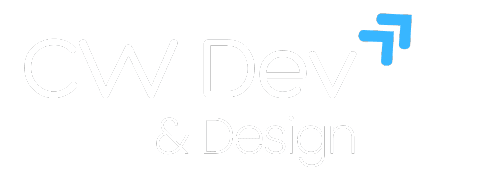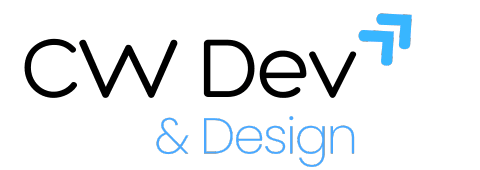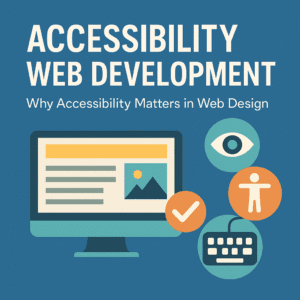Accessible web development means designing websites so everyone can use them – regardless of visual, auditory, motor, or cognitive ability. In practice, this means following inclusive design and coding practices so that users with impairments can navigate, understand, and interact with your site just as easily as anyone else. An accessible site doesn’t just benefit people with disabilities; it improves the overall user experience for all visitors. In short, accessible web development makes your site more user-friendly, equitable, and inclusive for everyone.
Key Elements of Accessible Web Development
Creating an accessible website involves several key techniques and features:
Alt Text & Media Descriptions
Provide descriptive alt text for all images and graphics. This allows screen readers to narrate visual content to users who are blind or have low vision. Alt text also makes images machine-readable, improving SEO by allowing search engines to index visual content. Supply transcripts for audio and captions for video so users with hearing impairments can access the information.
Keyboard Navigation
Ensure every interactive element can be operated by keyboard alone. Native HTML elements like <button> and <a> tags inherently support keyboard focus. Test your site by navigating with only the keyboard – if you can’t reach a feature without a mouse, it needs fixing.
High Contrast & Readable Design
Use sufficient color contrast between text and background so content is legible to users with visual impairments or color blindness. Don’t rely on color alone to convey meaning. Choose readable font sizes, clear typography, and simple layouts.
Semantic HTML
Use meaningful HTML elements for content structure. Semantic tags give built-in accessibility and help screen reader users understand the page layout. They also boost SEO naturally.
ARIA Roles and Attributes
Add WAI-ARIA roles when creating custom UI components to convey their purpose to assistive technologies. ARIA roles and states ensure custom elements are understandable and usable.
Labels, Headings & Form Accessibility
Always associate <label> tags with form inputs and use logical heading structures. These simple practices help assistive technology users navigate your content easily.
Legal and Ethical Reasons to Prioritize Accessibility
Beyond providing better user experiences, accessibility is a legal necessity. Laws like the Americans with Disabilities Act (ADA) require that websites be accessible. In 2023 alone, there were over 4,600 ADA-related lawsuits filed over inaccessible websites.
The ethical case is clear: accessibility ensures fairness and inclusion. A commitment to accessibility strengthens your brand, promotes diversity, and demonstrates social responsibility.
Accessibility, SEO & Audience Reach
Accessibility also boosts SEO and expands your audience. Around 16% of the global population has some form of disability. Accessible sites also tend to load faster, work better on mobile, and have lower bounce rates – all ranking factors for search engines.
By prioritizing accessibility, businesses ensure they reach a wider market while improving usability for everyone.
Common Mistakes Businesses Make
Even well-intentioned websites often fall short on accessibility. Some common pitfalls include:
- Missing or vague alt text
- Poor keyboard support
- Low contrast and color reliance
- Non-semantic markup
- Unlabeled forms
- Auto-playing media without captions
- Neglecting mobile accessibility
These mistakes often stem from overlooking accessibility during design and development. Fixing them early with audits and user testing is critical.
How CW Dev & Design Can Help
At CW Dev & Design, we make accessible web development a core part of our service:
- Comprehensive accessibility audits
- Implementation of best practices like alt text, keyboard navigation, ARIA roles, and semantic HTML
- Custom accessible solutions including skip links, high-contrast modes, and accessible forms
- Ongoing support and training for your staff
Our team ensures your website is compliant, user-friendly, SEO-optimized, and welcoming to all audiences.
Ready to make your website accessible? Contact CW Dev & Design today to build a site that everyone can use.


